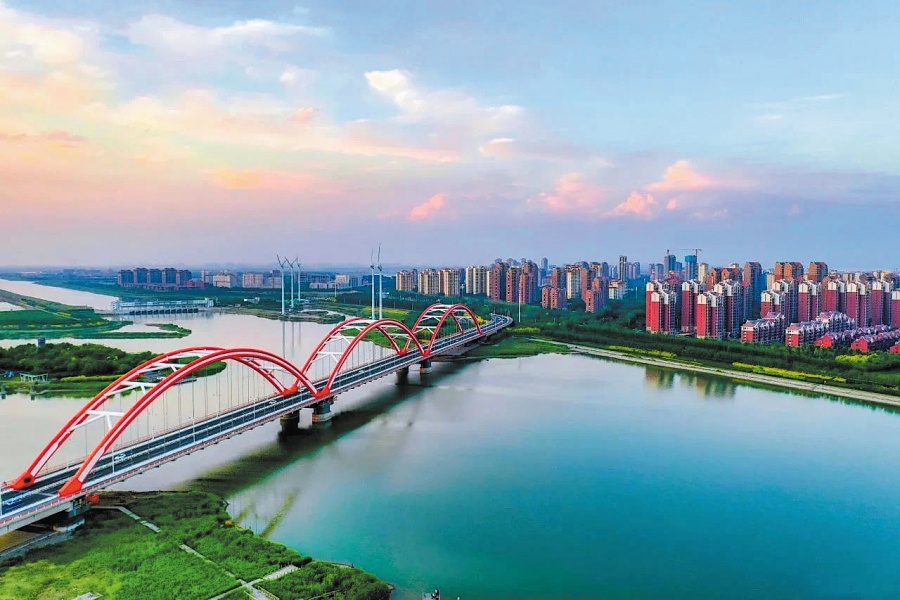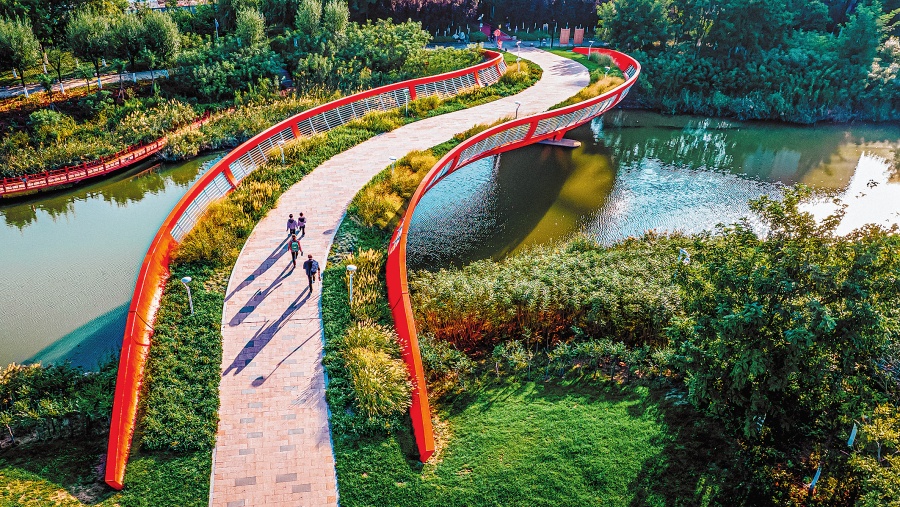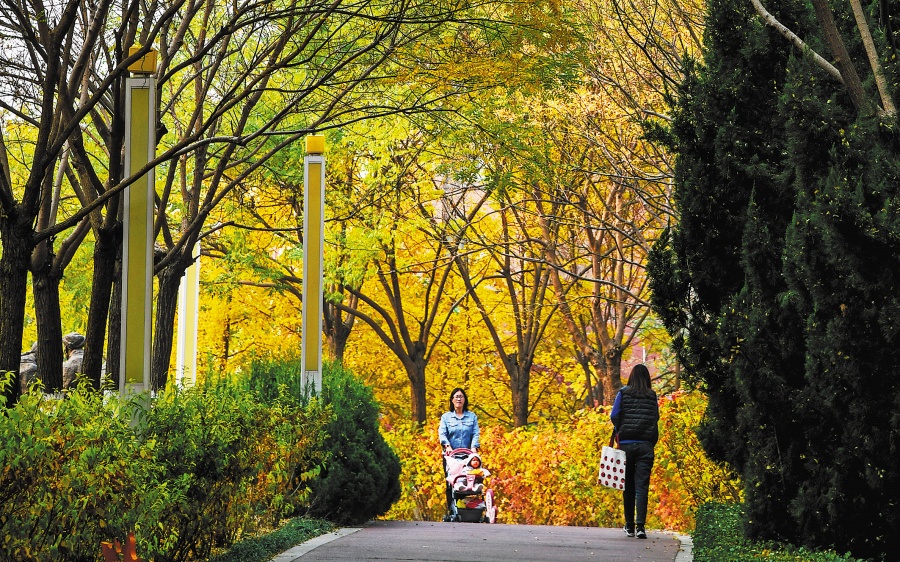
A panoramic view of China-Singapore Tianjin Eco-City in Tianjin's Binhai New Area. [Photo provided to CHINA DAILY]
Twelve teams from China and Singapore recently participated in an eco-city competition to explore innovation and implement green technologies in Tianjin municipality.
The teams were chosen from a pool of 147 for the 2024"Eco-Innovation, Green Action" International Young Talents Innovation Competition & Eco-City Innovation Star Competition Finals held at the China-Singapore Tianjin Eco-City on Oct 22.
Their aim was to adapt their green technologies to the eco-city, a pioneering green area being developed by China and Singapore.
The winning projects are poised to build upon previous successes in this area, part of Tianjin's Binhai New Area.
One of China's premier hubs for green development, the eco-city spans 30 square kilometers with a population of 160,000, and has been thriving on saline-alkali soil since its inception in 2008.
This year, the projects are expected to garner heightened attention from the local government, as a blueprint to transform the eco-city into a national model zone for green development received approval from the State Council in August.
The plan outlines standards and steps to elevate the eco-city to an internationally pioneering level in green development.
China and Singapore are joining forces to enhance green technologies, equipment, services, infrastructure and green financing initiatives.
"The new plan is set to propel the eco-city toward becoming a global exemplar in green and low-carbon development," said Teo Eng Cheong, CEO of Sino-Singapore Tianjin Eco-City Investment and Development Co.

People jog on a running trail at a park in the eco-city. [Photo provided to CHINA DAILY]
Since 2008, the builders of the eco-city have been exploring new technologies and approaches for environmental restoration, using scientific innovation to transform the area into a verdant oasis.
Fu Peng, deputy director of the Construction Bureau of China-Singapore Tianjin Eco-City, said that to address the severe saline-alkali land, they employed techniques such as subsurface drainage for salt removal, leaching layers for salt isolation and using imported topsoil for planting.
"We prioritized the use of locally improved mildly saline-alkali soil to minimize ecological disruption in other areas," Fu said.
"For moderate to mild saline-alkali land, we implemented measures including desalination, salt isolation, salt blocking, fertilization, and planting salt-tolerant vegetation to establish native plant communities. Also, we utilized key technologies for rainwater collection and salt leaching to improve the saline-alkali land," he added.
To transform bodies of water, local authorities utilized the natural advantages of Tianjin being a coastal city to expand the water bodies within the area, enhancing circulation and improving aquatic ecosystems.
Designated as one of the "most beautiful rivers and lakes" in Tianjin, Jinghu Lake is the largest scenic lake within the eco-city, merging with the nearby Jiyun River before the river flows into the sea.
The lake was once a 2.56-sq-km sewage reservoir that had accumulated wastewater for 40 years.
Zhang Xinyu, an inspector from the local eco-environment bureau, said, "We treat the soil under the water and will never cease in our efforts in eco-rehabilitation."
Furthermore, to maintain a healthy and stable ecosystem, the eco-city has established a target to grow at least 70 percent of indigenous plant species in the area.

People relax at a park in the ecocity area. [Photo provided to CHINA DAILY]
The main tree species in the eco-city include winter gold trees (Sophora japonica), ash and black locust trees, which not only adapt well to the local climate but also reflect the regional style.
Species such as Platanus orientalis, ginkgo trees and begonias have been introduced to the area.
The city has incorporated ornamental plants to create a diverse and vibrant ecological landscape with distinct layers and notable seasonal changes.
In spring, the bright and beautiful weigela flowers bloom; summer sees the energetic sage in full swing; autumn showcases the exuberant display of seepweed; and in winter, the resilient lonicera maackii thrives.
Currently, greenery in the eco-city has exceeded 50 percent of its area, with 137 plant species.
The excellent ecological environment has attracted numerous wild animals to breed and thrive here, according to the administrative committee.
Surveys indicate that there are 332 animal species in the area, with endangered relict gulls — accounting for about 80 percent of its global population — choosing this area as their wintering and breeding grounds, the administrative committee said.
In addition to natural rehabilitation, the area has seen the country's first zero-carbon building. It has widespread applications in solar energy, geothermal energy and wind power, according to the committee.
yangcheng@chinadaily.com.cn